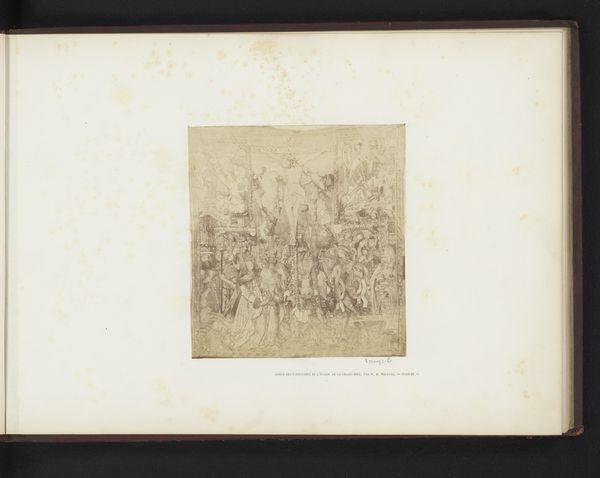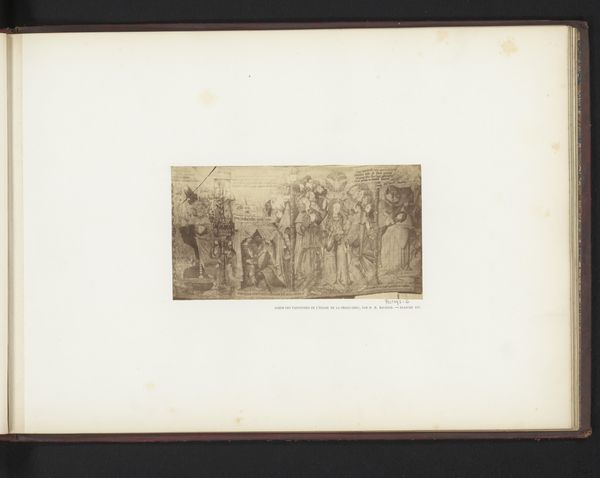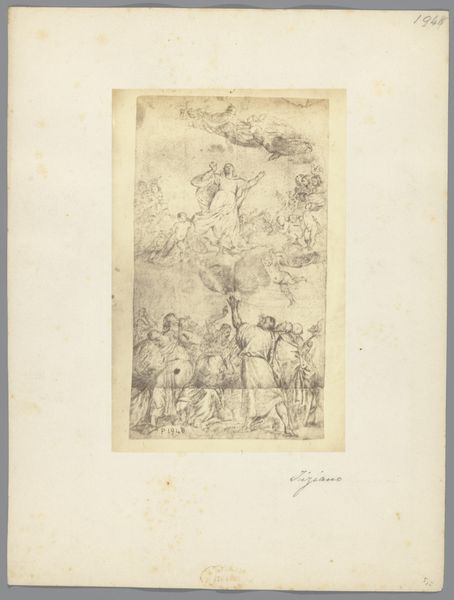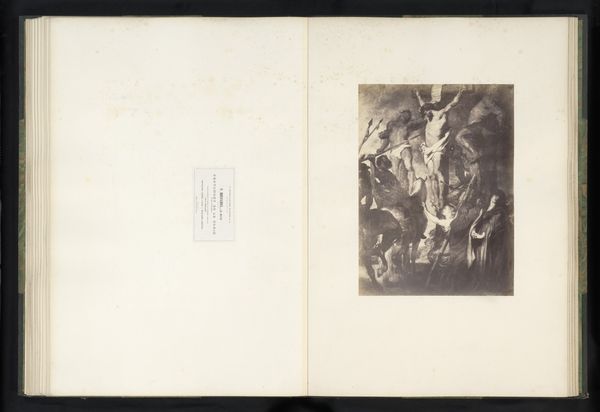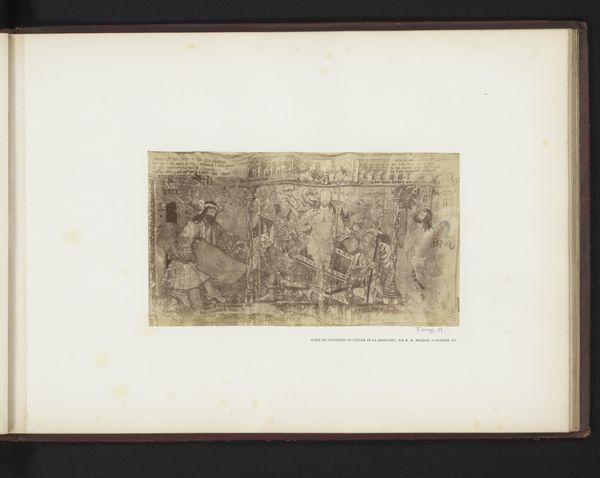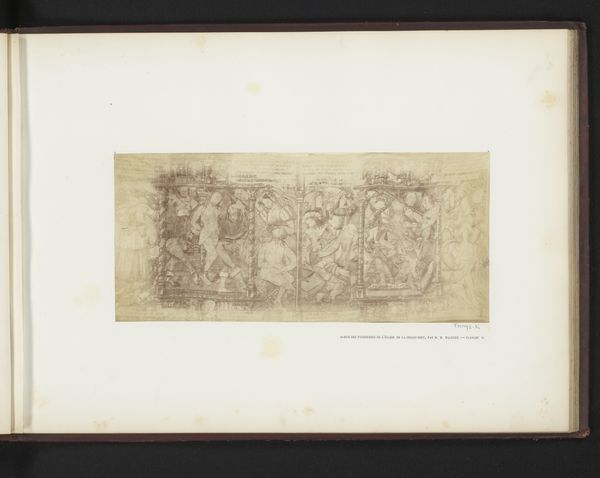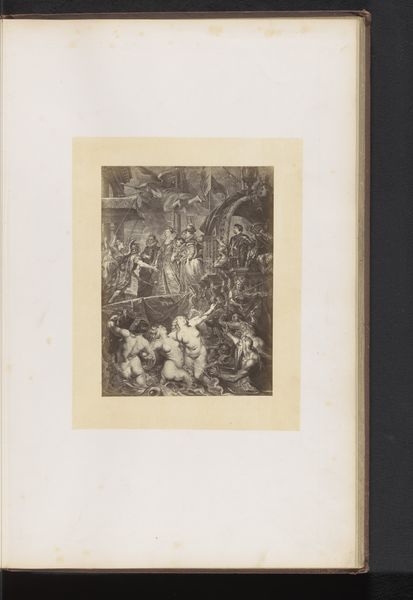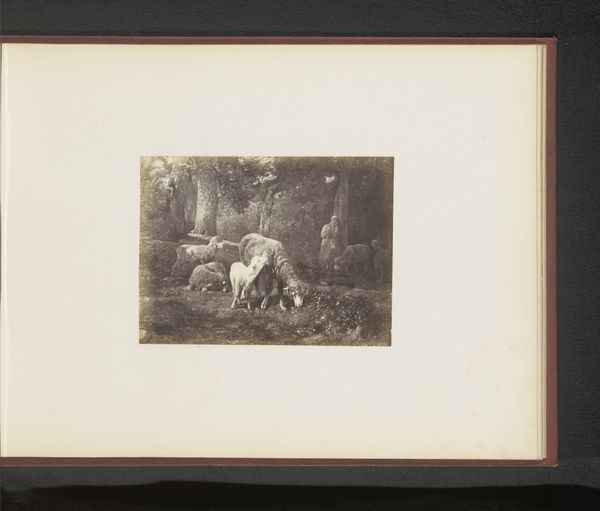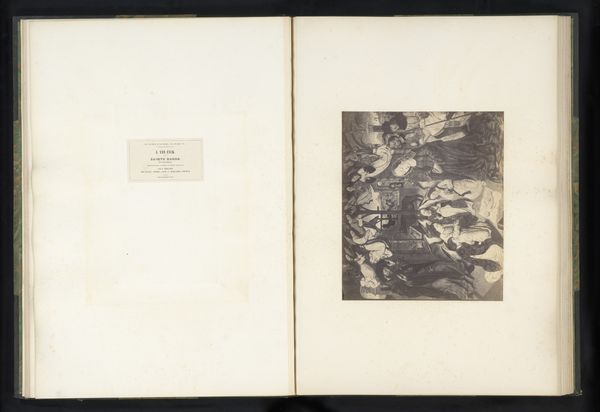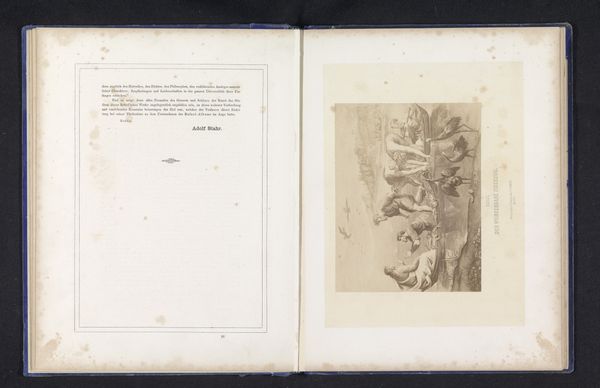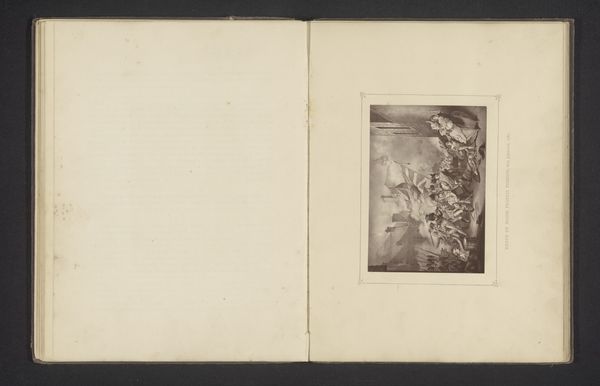
Tapijt met de verrijzenis van Christus in een kerk te La Chaise-Dieu c. 1868 - 1873
0:00
0:00
drawing, pencil
#
drawing
#
figuration
#
pencil
#
history-painting
#
watercolor
#
christ
Dimensions: height 157 mm, width 157 mm
Copyright: Rijks Museum: Open Domain
Curator: This intriguing drawing by Hippolyte Malégue, dating from around 1868 to 1873, is titled 'Tapijt met de verrijzenis van Christus in een kerk te La Chaise-Dieu'. Editor: It feels like a ghost story, honestly. Very faint, spectral. Is it unfinished, perhaps? The subject is bursting forth from what seems like a vortex of chaotic marks. Curator: It's rendered primarily in pencil, and though faint, the details do suggest it was intended to be a careful study for a larger history painting, a documentation of a church tapestry. Editor: The social context here is rich! Religious art in post-Revolution France... that's fraught territory, a real battleground of ideologies and aesthetics, as revolutionary principles had just influenced church design and symbolism, marking an interesting paradigm shift. Curator: Absolutely. The figures are numerous, their faces just fleeting suggestions. I wonder if the artist found it difficult to convey such grandeur in a small-scale work. The subject of Christ's resurrection suggests themes of renewal and faith. Editor: Indeed, Maléigue frames a tapestry within his own artwork, creating layered storytelling: What were the intentions of the original artisans? How is Maléigue reframing it for his audience? Power dynamics always come to play. Curator: It makes me think about how fragile faith and belief are, and how something monumental can be captured so ephemerally with pencil on paper, almost as though it might disappear again. It certainly captures that ambiguity in the best way. Editor: A sketch can suggest infinite possibilities; a finished work can limit them. In many ways, that openness is a very generous act. Maléigue invites us to complete the story. It encourages active engagement. Curator: I find the drawing profoundly meditative; an intimate conversation between artist, artwork, and viewer—a ghost of an idea lovingly traced on the page. Editor: Well, seeing through your lens, I recognize there is value beyond the unfinished quality. It really opens the narrative rather than sealing it shut, in a society reconstructing itself through religion and art.
Comments
No comments
Be the first to comment and join the conversation on the ultimate creative platform.
